|
by Dark Watcher |
|
|
The Satellaview was not really a console, but was an interesting add-on for the Super Famicom. It was licensed by Nintendo and
was released in Japan in 1995. It cost 14,000 yen (about $150) and a subscription fee had to be paid monthly to use the service.
The unit sat under the Super Famicom and was one of only two devices to utilize the port found underneath the console (the other was
the Lifecycle Exertainment). It connected to a satellite channel called St. GIGA and allowed subscribers to download games, demos, news, interviews, and whatever else Nintendo felt like offering. There were no costs beyond the price of the device itself and subscription; all downloads were free. The system focused more on BS exclusive games rather than just demos of existing titles. The games could be saved for use later and could only be downloaded between 4 PM and 7 PM. The small time window was because St. GIGA was also used to broadcast normal TV programming. The base unit contained a 1 megabit ROM chip which contained the system's operating system, 256k of flash memory to store downloaded games on, and 512k of RAM to add to the Super Famicom's capabilities (this may or may not have also been necessary to run the OS and its various functions). If the 256k of flash memory wasn't enough, you could also buy Game Boy sized carts containing 1 megabit of flash memory that fit into a Super Game Boy style cartridge, called the BS-X Special Broadcast Cassette (which retailed for around $30). |
|
| The Satellaview broadcasted from 23rd April 1995 to June 30th 2000. It continued receiving new games up until March 1999. The first game on the system was a graphical update of Zelda no Densetsu (aka. The Legend of Zelda). | |
 HANDS ON REVIEW HANDS ON REVIEWby ShellShock (Special Guest Contributor) |
|
|
The BS-X is, as you might have heard, a sort of "online adapter" for the Super Famicom that Nintendo put out in 1995 after the
infamous CD-ROM add-on fiasco with Sony. BS-X literally stands for "Broadcast Satellaview X" (not "Bandai Satellaview X", like some
sources proclaim). Satellaview assumed to be a blend of the words "satellite" and "view", with "X" meaning "unknown". The basic system set retailed for 14,000 yen back then, which converts to $113.47 nowadays. It is composed of a base platform that fits underneath the console, a Super GameBoy-shaped adapter that plugs into the Super Famicom's cartridge slot, an AV selector and the system's interface application BS-X Soreha namae o nusumareta machi no monogatari or The Story of The Town Whose Name Has Been Stolen. This is the BS-X's user interface software, designed in the shape of an town that could be explored. When accessed for the first time, the system prompts for the user's name and gender to create an avatar (or Satellaview "Mascot") with whom you'll be able to roam the town at will. Each building represents many of the different features the BS-X is able to access through its satellite connection: online high score boards, news, game demos, game cheats and tips, quizzes, previews, games, etc. All connecting cables are of course also included and a "Deluxe" set came with an additional 8-Megabit (1MB) of extra storage space in the form of a small memory cart (also sold separately) that boosted the system's basic 256 Kb of on-board memory and let you store more downloads. Unfortunately the sources for these numbers are not 100% accurate, so take them as an estimate. It is also believed that the base platform helped the Super Famicom's performance with extra on-board RAM. The service was completely different than the ones last-gen consoles present nowadays. Online multiplayer gaming was NOT the BS-X's purpose in any way. Instead, its only function was that of content delivery thru a satellite connection, while player feedback to the server was minimum to non-existent. For this purpose Nintendo teamed up with Japanese satellite station St. GIGA to handle the delivery and publishing. Although a few other giants like Squaresoft and Enix also signed up on the deal, the big N ended up producing more than 80% of BS-X titles. St. GIGA's satellite decoder box and dish were a must to enjoy what the BS-X had to offer. These boxes must have been very popular in Japanese households, as Nintendo would obviously try to reach as much of a wider audience as it could without forcing gamers to pay full price for the extra equipment and its monthly fee on top of the already expensive BS-X system and Nintendo's own monthly subscription. With all the hardware set up, and having paid Nintendo's subscription fee, we are finally ready to start downloading games for free! But not so fast. St. GIGA also broadcasted its regular programming during the day, so the delivery of BS-X content was only available in between 4:00 PM and 7:00 PM. Not only were downloads, news, reviews and the rest of the features unavailable outside this time frame, but all of the system's games with "live" elements (which were the majority) were rendered useless during the rest of the day. This is the main reason why nowadays most BS-X titles can't be emulated. Daily, weekly or even monthly schedules were set by the station for users to download or play games, often dividing them in chapters, maps or areas. For example, you could only play Zelda's map 1-part 1 on a Thursday night between 4:00 PM and 7:00 PM, and would have to wait until next Thursday to play the second part. Working late, going out with your girlfriend / boyfriend, or any sort of event characteristic to having a normal life meant you would have to wait an entire month for the re-broadcast; which in some cases are not confirmed to exist. Blackout? Missed the train? Have a hot date? Tough luck. It was like waiting for the UPS man to deliver that great new game: You make sure you cancel any appointments and sit your ass at home around 4:00 PM because you know that's when he usually comes. But the moment you leave your house you miss him, only to find that dreaded note on your door: "Next delivery attempt: next month". Not a very strong content delivery model by today's standards, that's for sure. Downloadable games can be divided into two main categories: installment-based (most of them playable in during broadcasting hours), and stand-alone titles. The first were delivered in parts, and most of them were real-time titles with elements like live voice acting, live music, and a real-time clock. Because of these features they could only be downloaded and played during the station's allotted broadcasting hours and were not accessible the rest of the time. The second were stand-alone games that once downloaded and stored in memory (again in between 4:00 PM and 7:00 PM) could be played anytime without the need of satellite service, although high score boards were posted online by St. GIGA which in turn got this feedback via either regular mail or a direct upload thru the interface. |
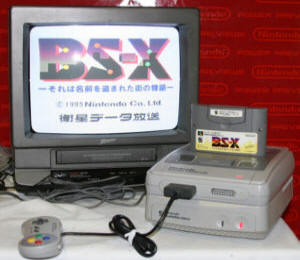 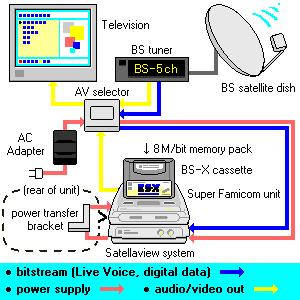 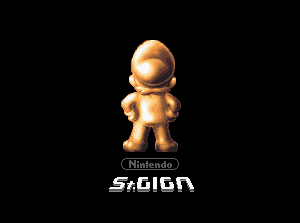 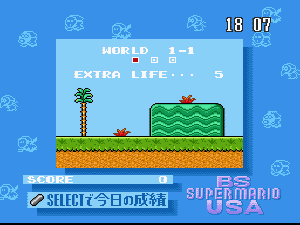 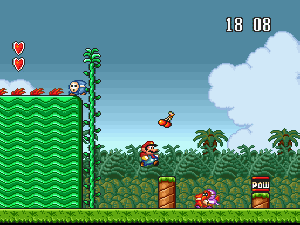 |
|
Titles featured include NES upgraded remakes, re-releases of exact copies of older Super Famicom titles, BS-X system exclusives and
remixes of cartridge-based Super Famicom games. For extended overviews of the games that were released for the BS-X, please check out
my in depth article at my website. All things considered, the BS-X is worth a look to SNES gamers even if its titles often have an unfinished, low-budget look. Most of them are not emulated because of their real-time features. The only way Nintendo could have ever been able to re-release them as a cartridge is at a discounted price, since you can't help but feel the system was often used as a dumpster for rejected / unfinished titles and remakes. |
|
|
|
|
|
A special thanks to ShellShock for providing the screenshot pictures of the Nintendo Satellaview and for extending his considerable
insight and knowledge to the creation of this webpage. Please visit his
excellent website for more great information on not only
this console, but for other classic gaming articles and reviews. You will not be disappointed with the expanded content!!
|
|
|






 2010s - NOTES
2010s - NOTES


 MODELS
MODELS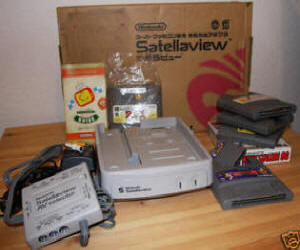
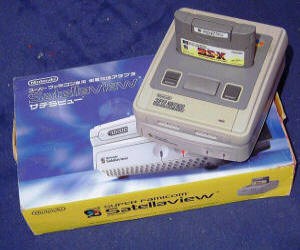
 CLONES
CLONES CONSOLE RATINGS
CONSOLE RATINGS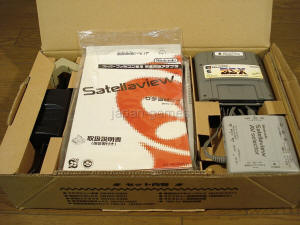
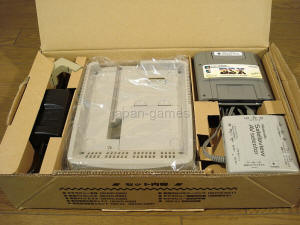
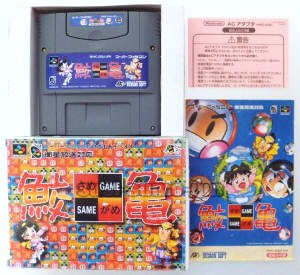
 FORMAT, PACKAGING & GENERAL INFO
FORMAT, PACKAGING & GENERAL INFO SCREENSHOTS
SCREENSHOTS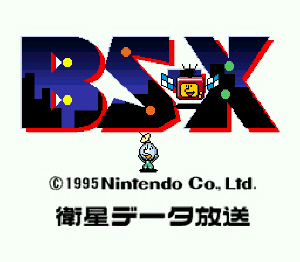
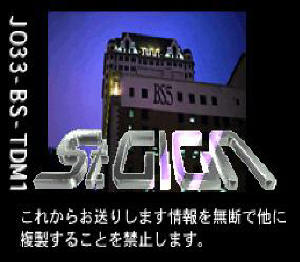
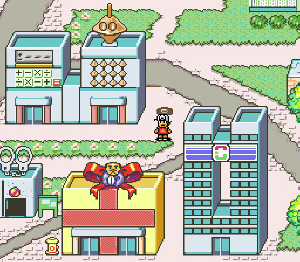
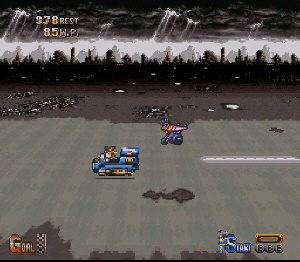
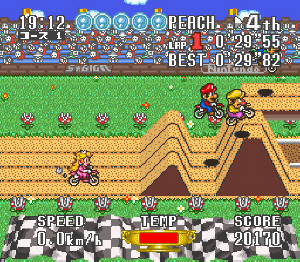
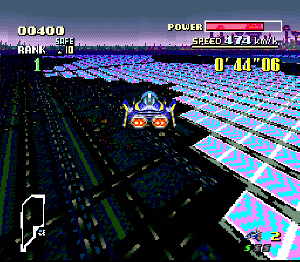
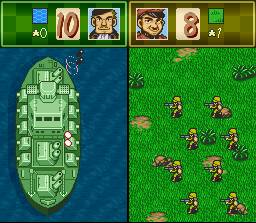
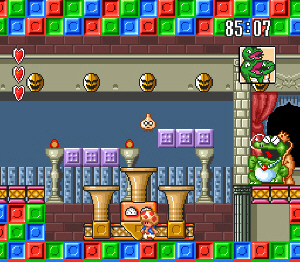
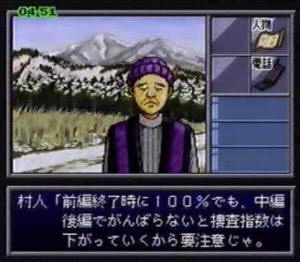
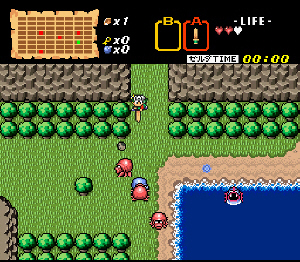
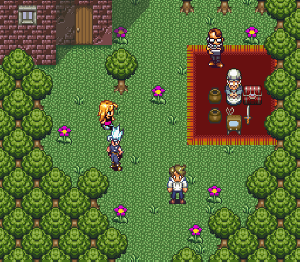
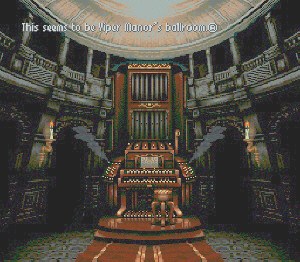
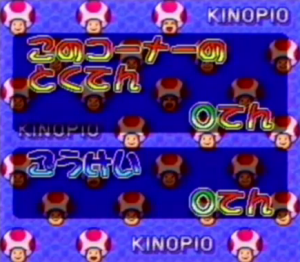
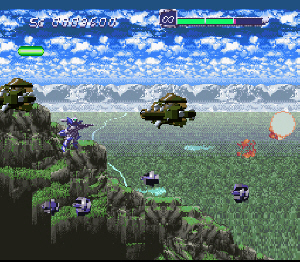
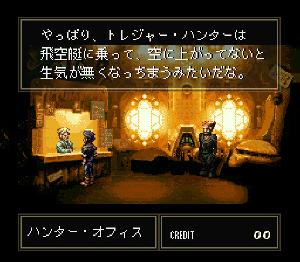
 EMULATION
EMULATION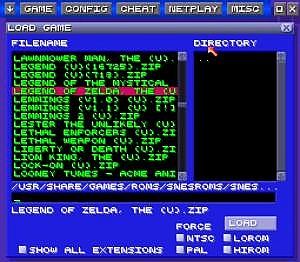
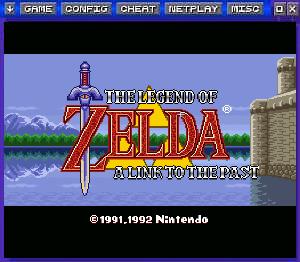
 SPECS & MANUALS
SPECS & MANUALS OTHER
MEDIA
OTHER
MEDIA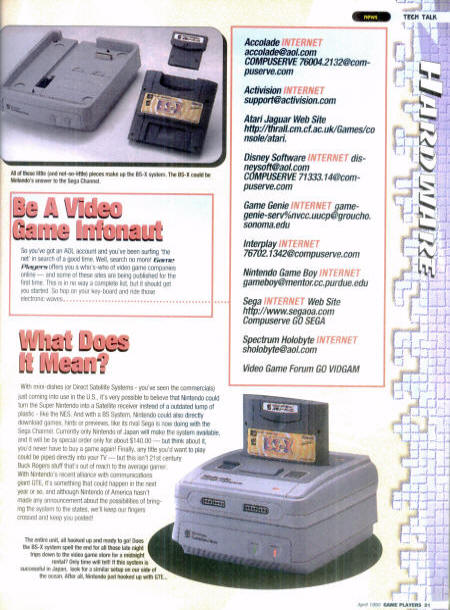
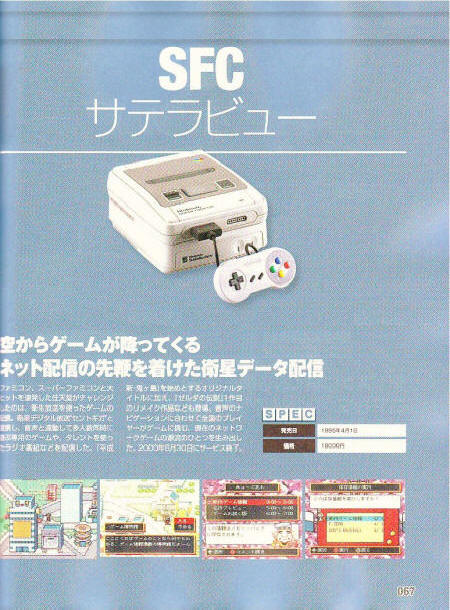
 WEB RESOURCES
WEB RESOURCES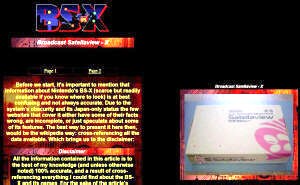
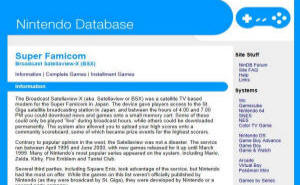
 DISCUSS
DISCUSS